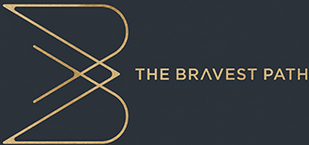The Art of Saying No: Knowing What You Want
For a long while, I took pride in thinking of myself as a chameleon. Flexibility and adaptability were my strengths, and they allowed me to juggle and accommodate a lot. I’ve also seen that even our greatest strengths, when overplayed, can become a weakness.
At times, being a chameleon became a guise for my people-pleasing tendencies. I was no longer simply being flexible—I was camouflaging my own wants and needs, and it was exhausting.
I discovered that a chameleon can change colour due to its layered skin. Some layers contain pigment, and others contain tiny crystals that rearrange to diffract light differently. As people-pleasers, we are adept at rearranging ourselves to fit other people’s wants. We contort ourselves to meet someone’s expectations or put other people’s priorities ahead of our own.
Historically, such rearranging of myself has led to feelings of resentment and a disconnect from what I need and feel. What I’ve come to learn is that resentment is an indication that somewhere along the line, I’ve neglected my own wants—I’ve said yes when I wanted to say no.
When you’re used to being adaptable, it can be difficult at first to say no. While it might feel indulgent or even selfish, the benefits of setting boundaries are plentiful. We are less likely to over-commit, which can help reduce overwhelm and burnout. We can better communicate and build trust in relationships when we are authentic about our wants and limits. And, we are more likely to feel better when our commitments align with what we want to do.
Yet even when we know the benefits of saying no, it still requires practice. Something I’ve observed about fellow people-pleasers is that we can easily lose sight of what we really want, what we really think, and who we really are.
Like chameleons, we have layers. Often, we don’t even realise we are piling other people’s wants and needs on top of our own. For example, I didn’t realise I didn’t like theme parks until I was in my 40s! When I was younger, I’d just go along with what my friends wanted to do, and often felt uncomfortable or disappointed as a result, without understanding why.
Examining those layers can help us to identify and better articulate our wants. A great place to start is with the Be, Do, Have exercise.
Begin with two timelines: one between now and three months (short term) and another between now and one year (long term). With those timelines in mind, think about three questions across different parts of your life—work, family, relationships, hobbies, and so on:
Who do you want to be?
What do you want to do?
What do you want to have?
For some, it’s helpful to start with what you don’t want in each section to clarify what you really yearn for. For example, in the “Be” section, you might write, “I don’t want to be this busy in one year from now,” and this might reveal that you want more time to think and pause each day.
Of course, thinking about what we want doesn’t mean that we will master the skill of saying no overnight. Rather, it’s like an art. We practice by tuning into our true selves and having the courage to show up as ourselves.
We can start small. For example, even when it feels trivial, I try to take a moment to ask myself, “What do I want?” so I can practice thinking about my own needs instead of automatically deferring to others.
Of course, there’s always a balance. Becoming more attuned to what we want doesn’t mean we have to disregard others’ requests or do away with the traits we view as strengths.
I found it interesting to learn that a chameleon doesn’t really change colour to camouflage itself—though it can make small adjustments—but rather to signal intentions to others, and regulate its temperature and even mood. Emotions such as desire and fear play a part in how this creature adapts, just as they do for us.
The lesson, I think, is that we can be intentional in how we respond to things, too. When we get curious, check in with ourselves, and know what we want to be, do, and have, we can create a strong foundational layer.
We can communicate what we want but still be flexible. We can say no while still being open. And instead of overplaying our strengths, we learn how to stand in them with confidence, clarity, and courage.
Bethan Davies, Managing Director of The Bravest Path, shares her personal insights on the power of saying no and offers strategies to help you embrace your own strength.


